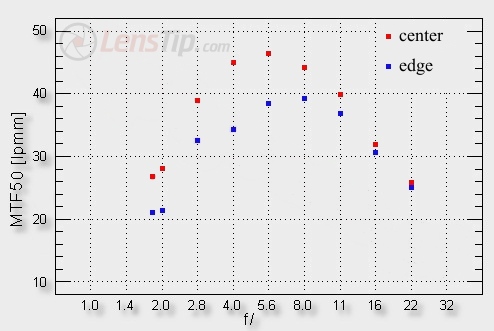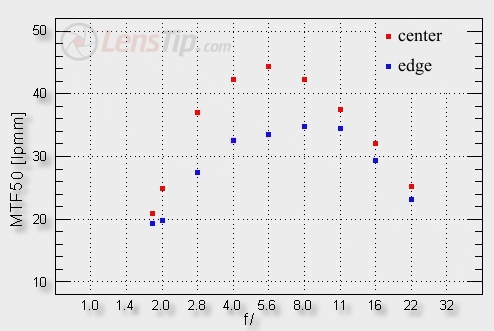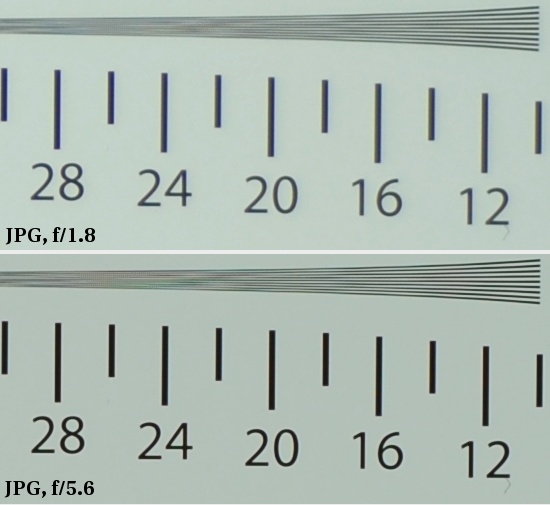Nikon Nikkor AF 50 mm f/1.8D
4. Image resolution

We can’t say we are too keen on the situation near the maximum aperture. The results below 30 lpmm are always considered unsatisfying. Fortunately, the decency level is exceeded near f/2.2 and the sharpness of images increases steeply up to a very high value of 46.4 lpmm which the lens reaches by f/5.6. Such a level is really outstanding. It’s worth noticing here that a Nikkor AF 1.4/50 reached 44.6 lpmm and a new Nikkor AF-S 50 mm f/1.4 G – 44.4 lpmm. Among other classic 50 mm lenses tested on D200 only the Zeiss Planar 1.4/50 fared better because it reached the sensationally high level of 48 lpmm. Being defeated by the Zeiss is nothing to be ashamed of, quite the opposite in fact. The mere fact that we compare such a cheap lens to the Zeiss should be a source of pride.
Please Support UsIf you enjoy our reviews and articles, and you want us to continue our work please, support our website by donating through PayPal. The funds are going to be used for paying our editorial team, renting servers, and equipping our testing studio; only that way we will be able to continue providing you interesting content for free. |
- - - - - - - - - - - - - - - - - - - - - - - - - - - - - - - - - - - - - - - - - - - - - - - -
The DX sensor’s frame edge performance is very much like the results in the centre. By f/1.8-2.0 the image quality is low but from f/2.5 it starts getting more decent and near f/5.6 it becomes very good.
Let’s deal now with the FX sensor performance of the tested Nikkor. The appropriate graph for the frame centre and the edge can be found below.

As you see the frame centre results are almost an accurate copy of the D200 results but lower by about 2-3 lpmm. That difference is typical for a comparison between D200 and D3x sensors so we are not surprised here. It would be also difficult to add anything, compared to the description of the D200 performance.
The FX frame edge compared to the DX frame edge is quite another story so the differences between the D200 and D3x results are more pronounced. They result not only from a different pixels efficiency but also from a different distance between the resolution measurement areas and the optical axis of the lens.
It doesn’t change the fact that the performance at the edge of such a big detector is very decent for such a fast and cheap lens. We can get good quality pictures in a very wide range of apertures: from f/2.8 to f/16.
At the end let’s check how our test chart crops from the centre look like, which we got from the D200 camera’s files saved in the JPEG format.
 |






